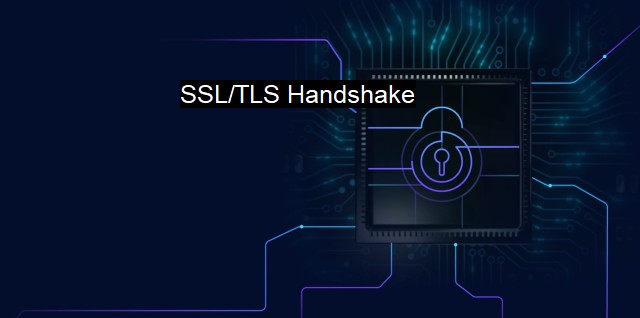What is SSL/TLS Handshake?
Understanding SSL/TLS Handshake and Optimizing it with Antivirus Technology: A Comprehensive Guide on Establishing Secure Communication between Client and Server.
Secure Sockets Layer (SSL) and Transport Layer Security (TLS) are common security protocols used to secure internet communications. These protocols help increase the security of internet communications by verifying the parties involved in online transactions and encrypting data transferred between them.An SSL/TLS handshake represents the steps that a server and a client take to agree on a secure connection. This process occurs behind the screens every time a user tries to access a secure website. The handshake decides the protocol version, what cipher suites will be used, and what keys will be used.
The handshake process begins with a client sending a "ClientHello" message to the server. The message contains the client's SSL/TLS version, preferred cipher suites (the combination of encryption, hash, and key exchange algorithm), and a random string of bytes known as the "Client Random."
The server responds with a "Server Hello" message, where it chooses and confirms the SSL/TLS version and cipher suite from the options provided by the client. The server also sends its digital certificate and a unique “Server Random” string of bytes. The digital certificate contains the server's public key and verifies the server's identity.
Next, the client verifies the server's certificate with the Certificate Authority (CA) that issued it. This is to ensure that the server's certificate has not been tampered with by hackers. After the certificate is verified, the client uses the server's public key to encrypt the 'pre-master secret' - a random string of bytes generated by the client. The encrypted 'pre-master secret' is then sent to the server.
The server uses its private key to decrypt the 'pre-master secret' shared by the client and use this to generate session keys. The client also computes the session keys derived from the 'pre-master secret'. These session keys comprise a pair - an encryption key and a decryption key. One key is used to encrypt the data and the other to decode the data.
Both the client and the server finally exchange "Finished" messages which are encrypted with the session key. This completes the SSL/TLS handshake, securing all future communications with the session key. The client and server can now exchange data securely over the session. Thus the SSL/TLS handshake ensures a secret key is exchanged securely between a client and server before data transmission.
Since the SSL/TLS handshake process is all about ensuring secure and reliable online communications, it is essential for antivirus companies as well. Most antivirus and internet security applications cover SSL/TLS scans as part of their suite of security services. They scan SSL/TLS traffic to verify the digital certificates used during the SSL/TLS handshake. It ensures that these certificates are authentic and not manipulated by malicious entities.
If an antivirus detects a security risk during the SSL/TLS handshake, as in the digital certificate not being valid, it will block the connection and alert the user. Therefore, the SSL/TLS handshake is a crucial element of cybersecurity as it handles the transfer of data securely across the internet and protects against potential threats. It offers users enhanced online security, assuring them that their data remains confidential and intact.
The SSL/TLS handshake's primary role in cybersecurity is to authenticate the participants in a connection and set up a secure transmission channel. The process establishes a secure environment by agreeing to security settings, verifying the identity of the server, and then employing asymmetric encryption to transfer a secret key, which is then used for symmetric encryption of the communication. Monitoring and securing this process forms an essential part of many cybersecurity measures, including antivirus software.

SSL/TLS Handshake FAQs
What is an SSL/TLS handshake?
An SSL/TLS handshake is the process through which a secure connection is established between a web server and a client. It involves the exchange of cryptographic keys and the negotiation of the encryption protocol to be used for secure data transmission.Why is the SSL/TLS handshake important in cybersecurity?
The SSL/TLS handshake is critical in cybersecurity because it ensures the confidentiality, integrity, and authenticity of data transmitted between a web server and a client. Without a secure SSL/TLS handshake, data transmission can be intercepted, manipulated, or redirected, compromising the security of sensitive information.What are some common issues that can occur during an SSL/TLS handshake?
Some common issues that can occur during an SSL/TLS handshake include mismatched cryptographic protocols, expired or invalid SSL/TLS certificates, and incorrect cipher suites. These issues can result in failed handshakes or insecure connections, leaving the vulnerable to security threats such as man-in-the-middle attacks.How can antivirus software help with SSL/TLS handshakes?
Antivirus software can help with SSL/TLS handshakes by detecting and preventing SSL/TLS-based attacks, including man-in-the-middle attacks and SSL stripping attacks. It can also scan SSL/TLS certificates for validity and verify that the encryption protocols used for secure data transmission are secure and up-to-date. By leveraging antivirus software, users can ensure that their SSL/TLS handshakes are secure and free from vulnerabilities.| | A | | | B | | | C | | | D | | | E | | | F | | | G | | | H | | | I | | | J | | | K | | | L | | | M | |
| | N | | | O | | | P | | | Q | | | R | | | S | | | T | | | U | | | V | | | W | | | X | | | Y | | | Z | |
| | 1 | | | 2 | | | 3 | | | 4 | | | 7 | | | 8 | | |||||||